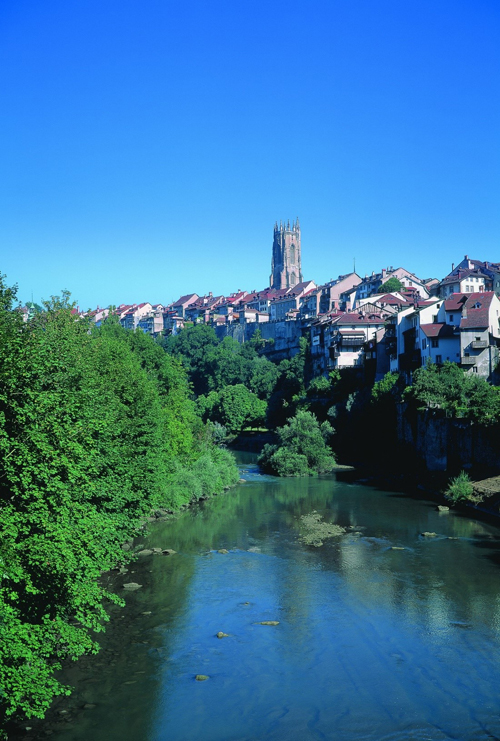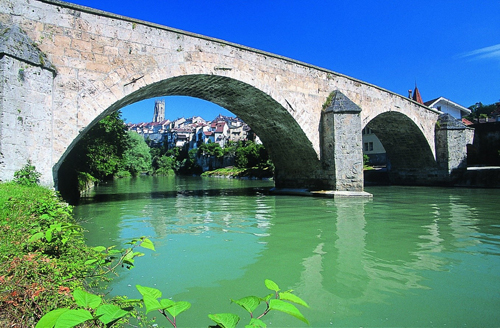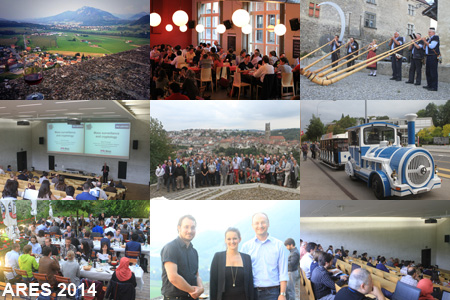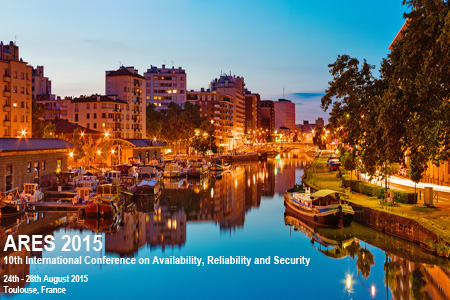Fribourg is the capital of the Swiss canton of Fribourg and the district of Sarine. It is located on both sides of the river Saane/Sarine, on the Swiss plateau, and is an important economic, administrative and educational center on the cultural border between German and French Switzerland (Romandy). Its Old City, one of the best maintained in Switzerland, sits on a small rocky hill above the valley of the Sarine.
Fribourg was founded in 1157 by Berchtold IV von Zähringen. Its name is derived from German frei (free) and Burg (fort). Its most ancient part is conveniently located on a former peninsula of the River Sarine, protecte d on three sides by steep cliffs. The easily defended city helped the Dukes of Zähringen to strengthen and extend their power in the Swiss plateau in the area between the Aar and the Saane/Sarine.
d on three sides by steep cliffs. The easily defended city helped the Dukes of Zähringen to strengthen and extend their power in the Swiss plateau in the area between the Aar and the Saane/Sarine.
The Old City is located on a hill, only about 100 metres wide, which rises about 40 metres above the valley floor. Most quarters of the city are located on the High Plateau and he surrounding hills, which have an average elevation of 620 metres. The valley floor is only settled in the area immediately around the Old City.
As you discover the Old Town with its medieval streets and houses transposed into the present. Come to Fribourg and cross its bridges… bridges between two cultures, bridges linking the past and the future, the traditional and the modern.The pedestrian streets, the friendly terraces of its cafés. Savour the city, explore its treasures, museums and monuments. Discover the works of contemporary artists, such as Alfred Manessier, Jean Tinguely, Niki de Saint Phalle, Mario Botta and Jean Nouvel. Take a walk through history, leaving the ramparts to discover the medieval layout of the Old Town. Imagine shops and crafts of another era as the streets guide you past the Gothic facades.
Cross the bridges, sense the evolution between old and modern, and look past the ramparts to catch a glimpse of the future. Discover the magic of the Old Town, tread the cobbled streets, reach out and touch the stone of the bridges and feel the passing of time.
Enter the St. Nicholas Cathedral and be awed by the grandeur and grace of the Gothic architecture. Be inspired by the artistry of the builders, stone cutters and craftsmen who created it over the centuries. Climb the 365 steps of the spiral staircase to the top of the tower and you might hear the chimes of some of its thirteen bells, among the oldest in Switzerland.

The great chefs of Fribourg’s many gourmet restaurants will whet your appetite with masterfully prepared seasonal menus that highlight regional products with authenticity, creativity and elegance – an incomparable and unforgettable experience. Try Fribourg’s specialities, typical regional dishes such as cabbage, ham on the bone, the local botzi pears, meringues with the rich thick cream from Gruyère, anise seed bread or «bricelets», thin waffle biscuits… and don’t forget to try the «cuchaule», a brioche-like sweet saffron bread to be eaten with the famous bénichon mustard, a delicious blend of sweet and spicy flavours.
Read more about Fribourg.
Source: Fribourg Tourism




